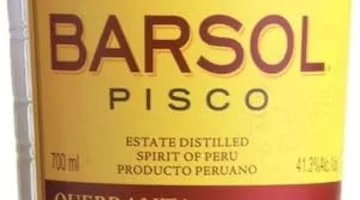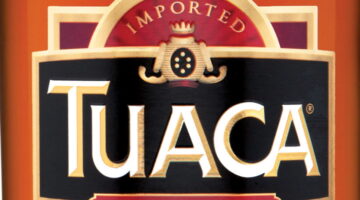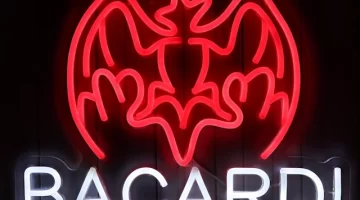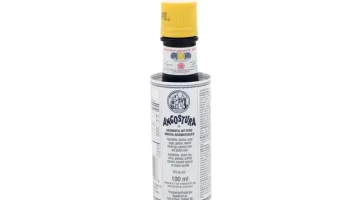What is Limoncello?
Travel Distilled explains what limoncello is, the history of this Italian spirit, how and where it’s made, how to drink it and its use in cocktails and cooking.
Limoncello, the Italian liqueur, is loved around the world for its rich lemony goodness. Known for its vivid hue, velvety texture and refreshing citrus burst, limoncello embodies the sun-soaked soul of Southern Italy in every drop.

What is Limoncello’s History?
Originating in Italy, limoncello boasts a rich, compelling history dating back over a century. The exact origins of limoncello remain cloaked in mystery, but three regions – Capri, Sorrento, and Amalfi – passionately lay claim to being its birthplace.
The refreshing drink was primarily enjoyed as a homemade liqueur within local households before making its global mark as an iconic Italian export. From monks sipping it as a revitalizing tonic to fishermen enjoying it to ward off the cold, the humble limoncello’s rich past adds to its allure.

What is Limoncello’s Production Process?
True limoncello springs to life in Italy, amidst the sea-kissed lemon groves, relying on simple, all-natural ingredients. It primarily consists of lemon peels, alcohol, water, and sugar, and its distinctive character arises from using lemon zest – the bright, flavourful outer layer of the lemon peel.
Making limoncello is a delightful affair, albeit one requiring patience. It begins with infusing lemon zest in high-proof alcohol (usually vodka or grain alcohol) for several weeks, allowing the natural oils to infuse their aroma. After straining out the peels, a simple sugar syrup is added to balance the liqueur’s zesty tang with sweetness. The limoncello then rests until it achieves its signature, sumptuous, citrus-soaked smoothness.

The Italian Roots of Limoncello
Southern Italy, particularly the Sorrentine Peninsula, the island of Capri and the Amalfi Coast, is where the world’s best limoncello comes from. The temperate Mediterranean climate nourishes verdant lemon groves, and these locally-grown lemons, bursting with natural sweetness, lend limoncello its rich character. No surprise then, that Italy considers it a liqueur of ‘guaranteed traditional speciality’ – a badge worn proudly by the alluring, sun-soaked elixir.

What is Limoncello’s Cultural Significance?
A bottle of limoncello represents more than a zesty drink. It’s an embodiment of Italy’s cultural heritage and relaxed, jovial social norms. Traditionally served chilled after dinner as a ‘digestivo’, or digestive, it brings family and friends together, aiding digestion while offering an excuse to linger at the dinner table, laughing and conversing.
Limoncello Brands to Look For
Here are some widely recognized and admired Limoncello brands to consider:
- Villa Massa: Hailing from the Sorrento region, Villa Massa boasts an all-natural, traditional limoncello recipe, taking full advantage of Sorrento lemons which are famous for their fragrance and sweetness.
- Pallini Limoncello: Made from the zest of Sfusato lemons, Pallini is a world-renowned limoncello brand that offers a truly classic, premium liqueur.
- Giuseppe Gallo’s Italicus Rosolio di Bergamotto: While not strictly a limoncello, this lemon-forward liqueur is noteworthy for its infusion of Italian bergamot and select botanicals.
- Luxardo Limoncello: Known for their maraschino cherries, Luxardo also crafts a quality limoncello that balances zesty, citrusy notes with a perfect touch of sweetness.
- Limoncetta di Sorrento: From one of the regions that claim to be the birthplace of limoncello, Limoncetta offers a fresh, fragrant liqueur that brings a splash of the Amalfi coast into every glass.

Remember, different brands have unique taste profiles. The perfect limoncello for you might be dependent on personal preferences when it comes to sweetness, zest, and strength of lemon flavour. Enjoy exploring the various options!
Limoncello: To Sip, Mix or Cook?
You’re most likely to find limoncello served straight in a chilled ceramic or glass shot at the end of an Italian meal. This ‘digestivo’ is known to assist in settling the stomach and, indeed, the mind. However, limoncello’s potential goes beyond this traditional use.
Mixologists often incorporate limoncello into cocktail recipes, lending them a lemony punch. Limoncello Spritz, Limoncello Margarita, and Limoncello Gin Cocktail are a few appealing cocktails where it’s the star.
Apart from in drinks, limoncello has a rich culinary use too. Whether drizzled over a lemon and mascarpone tiramisu, infused into a vibrant pasta sauce, or reduced to a syrupy glaze for poultry and fish, this Italian spirit infuses a bright, lemony touch to various dishes.

As an ode to Italian warmth and sunshine, limoncello brings its golden hues and sunny spirit to anyone who savours it. So whether you sip it as an after-dinner palate cleanser, mix it into your favourite cocktail or cook up a storm with it, limoncello guarantees a vivacious Italian twist to your culinary adventures.













